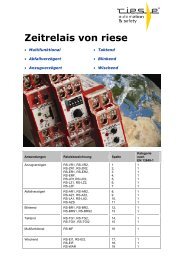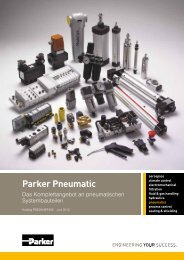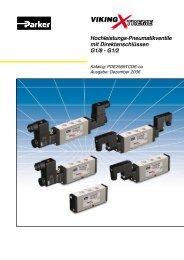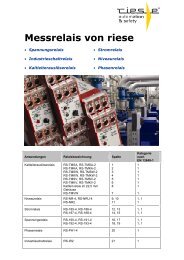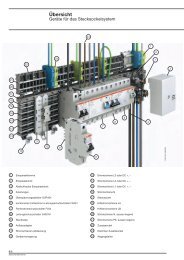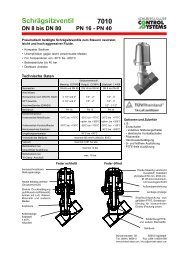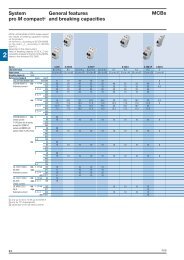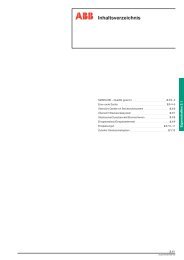Technical details System pro M compact®
Technical details System pro M compact®
Technical details System pro M compact®
- No tags were found...
You also want an ePaper? Increase the reach of your titles
YUMPU automatically turns print PDFs into web optimized ePapers that Google loves.
<strong>System</strong><strong>pro</strong> M compact ®<strong>Technical</strong> <strong>details</strong>Unwanted tripping - AP-R solution(high immunity)RCDsUnwanted trippingIn the event of disturbance in the mains, the RCDs normally present in the system are tripped, breakingthe circuit even in the absence of a true earth fault.Disturbances of this kind are most often caused by:- operation overvoltages caused by inserting or removing loads (opening or closing <strong>pro</strong>tection ofcontrol devices, starting and stopping motors, switching fl uorescent lighting systems on and off,etc.)- overvoltages of atmospheric origin, caused by direct or indirect discharges on the electrical line.Under these circumstances, breaker tripping is unwanted, since it does not satisfy the need to avoidthe risks due to direct and indirect contacts. On the contrary, the sudden and unjustifi ed interruptionof the power supply may result in very serious <strong>pro</strong>blems.For continuous service of prioritycircuits and simultaneous<strong>pro</strong>tection of user devicesand systems from transientovervoltage peaks, combineRCCBs and AP-R blocks withovervoltage surge <strong>pro</strong>tectivedevices OVR.To make <strong>pro</strong>tection more effectiveand widespread, it may be usefulto create a cascade systemextending over several levels, likethe one illustrated below.S 282 C 100magnetothermiccircuit-breakerOVR 165 PAP-R RCDsThe ABB range of AP-R anti-disturbance residual current circuit-breakers and blocks was designedto overcome the <strong>pro</strong>blem of unwanted tripping due to overvoltages of atmospheric or operationorigin.The electronic circuit in these devices can distinguish between temporary leakage caused bydisturbances on the mains and permanent leakage due to actual faults, only breaking the circuit inthe latter case.AP-R residual current circuit-breakers and blocks have a slight delay into the tripping time, but this doesnot com<strong>pro</strong>mise the safety limits set by the Standards in force (release time at 2 IΔn=150 ms).Guaranteeing conventional residual current <strong>pro</strong>tection, their installation in the electrical circuit thereforeallows any unwanted tripping to be avoided in domestic and industrial systems in which servicecontinuity is essential.Provisions of the StandardsIEC/EN 61008 and IEC/EN 61009 check RCD resistance tooperation overvoltages, envisaging the use of the 0.5 µs/100 kHzring wave. All RCDs must pass the test with a current peak valueof 200 A.For overvoltages of atmospheric origin, IEC 61008 and IEC 61009establish the resistance to a 8/20 µs surge with 3000A peakcurrent, but limit the <strong>pro</strong>vision to RCDs classed as selective. Notest is required for other types of RCDs.F 202 AC AP-R25A 30mAanti-disturbancebreakerDDA 202 AC AP-R25A + S 202 C 16anti-disturbanceblockDS 941 C 2530mA RCBODS 941 C2530mA RCBOABB AP-R anti-disturbance RCDs pass the general resistance testat 0.5 µs/100 kHz, also resisting the 8/20 µs surge with the samepeak current of 3000 A prescribed for the selective RCDs.11S 951 N C10magnetothermicbreakerS 201 Na C10magnetothermicbreakerOVR 140 Psurge <strong>pro</strong>tectivedeviceLightingsystemOther circuitsOVR 11surge <strong>pro</strong>tectivedeviceOVR 11surge <strong>pro</strong>tectivedeviceNC machine(e.g.: lathe,router, drill, etc...)PCPCABB11/73



